Politics
Ties thaw between Asian rivals India and China
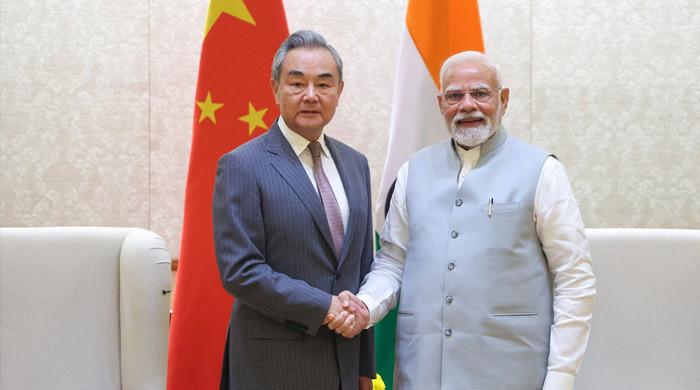
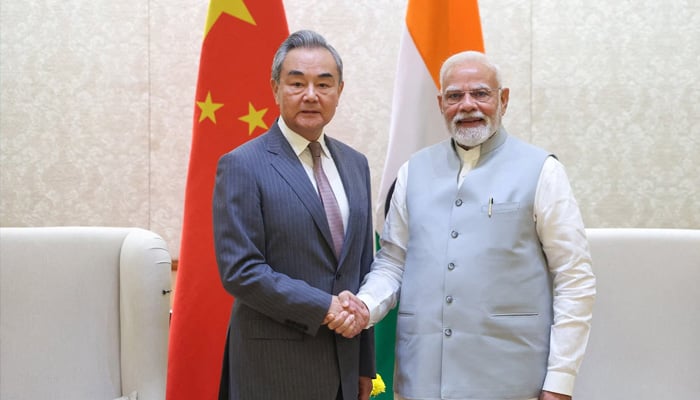
- Development comes against backdrop of US tariffs on New Delhi.
- Modi is on his first visit to China in seven years to attend SCO bloc.
- Regional security bloc, whose members also include Russia and Iran.
Indian Prime Minister Narendra Modi is expected to hold talks with Chinese President Xi Jinping on Sunday, as ties between the Asian rivals thaw against the backdrop of US President Donald Trump’s imposition of punitive tariffs on New Delhi.
Modi is on his first visit to China in seven years to participate in the summit of the Shanghai Cooperation Organisation (SCO) regional security bloc, whose members also include Russia and Iran.
Modi’s visit is the first since a deadly 2020 clash between Indian and Chinese troops on their disputed Himalayan border. The neighbours share a 3,800 km (2,400 miles) border that is poorly demarcated and has been disputed since the 1950s.
Here is a timeline of the thaw in ties since the military standoff began five years ago:
2020: At least 20 Indian soldiers and four Chinese troops are killed in hand-to-hand combat in the Galwan Valley in Ladakh, northern India, in June 2020.
The same year, New Delhi heightened scrutiny of investments from China, banned popular Chinese mobile apps and severed direct passenger air routes.
December, 2022: Minor border scuffles between Indian and Chinese troops break out in the Tawang sector of India’s northeastern state of Arunachal Pradesh, which is also claimed by China as part of southern Tibet.
August, 2023: Modi and Xi meet in Johannesburg on the sidelines of a summit of the BRICS grouping of nations and agree to intensify efforts to disengage and de-escalate tensions.
September 2024: Indian Foreign Minister Subrahmanyam Jaishankar, speaking at an event in Geneva, says about 75% of the “disengagement” problems at India’s border with China had been sorted out.
India’s aviation minister also indicates a thaw in the standoff, writing in a post on X that the two countries had discussed early resumption of direct passenger flights on the sidelines of the Asia-Pacific Ministerial Conference on Civil Aviation in Delhi.
October 2024: Both nations reach a deal on patrolling their disputed frontier to end the military stand-off.
Modi and Xi hold their first formal talks in five years on October 23 in Russia on the sidelines of a BRICS summit.
The leaders agreed to boost communication and cooperation between their countries and resolve conflicts to help improve ties.
December 2024: Indian National Security Adviser Ajit Doval travels to China to hold first formal talks with Foreign Minister Wang Yi on the border issue after the October agreement.
Doval and Wang are designated as special representatives by their countries for discussing the border issue.
January 2025: Wang and India’s Foreign Secretary Vikram Misri hold talks in China. Both sides agree to resume direct air services and work on resolving differences over trade and economic issues.
April 2025: Chinese embassy spokesperson says India and China should stand together to overcome difficulties in the face of tariffs imposed by Trump’s administration.
July 2025: Jaishankar makes first visit to China in five years, says India and China must resolve border friction, pull back troops and avoid “restrictive trade measures” to normalise their relationship.
Reuters reports that the Indian government’s top think tank has proposed easing rules that de facto require extra scrutiny for investments by Chinese companies.
August 2025: Wang tells his Indian counterpart while on a visit to New Delhi that China and India should establish “correct strategic understanding” and regard each other as partners, not rivals.
Later in the month, Chinese ambassador Xu Feihong says at an event in New Delhi that China opposes Washington’s steep tariffs on India and will “firmly stand with India”.
Politics
India and Canada agree on new roadmap for relations
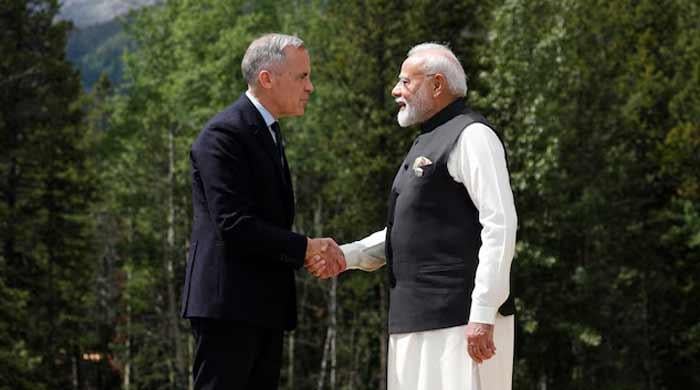
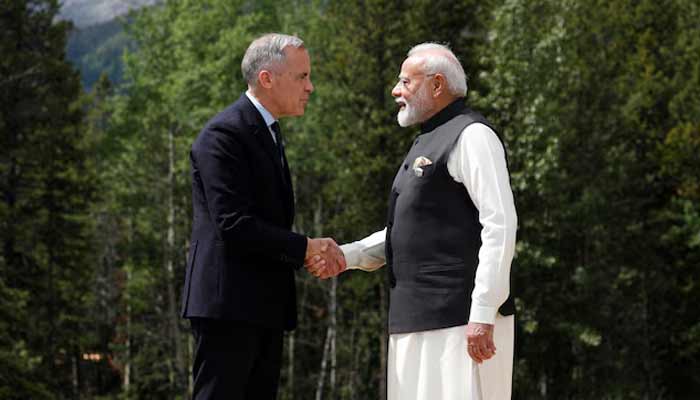
- India, Canadian FMs agree to deepen cooperation.
- Both sides seek to repair trust after two years of tensions.
- Emphasise partnership to counter global economic vulnerabilities.
India and Canada agreed on Monday on a new roadmap for their relations after talks between their foreign ministers in New Delhi, as both countries seek to mend ties strained over the killing of a Canadian Sikh separatist.
The two countries, both of which are looking to diversify trade away from the United States due to tariff announcements, agreed to collaborate on areas like critical minerals, trade and agricultural value chains, a joint statement said.
“Reviving this partnership will not only create opportunities for enhanced economic cooperation but also help mitigate vulnerabilities arising from shifting global alliances,” it said.
Almost two years of strained relations
The statement came after Canada’s Foreign Minister Anita Anand met Indian Prime Minister Narendra Modi and her counterpart Subrahmanyam Jaishankar on Monday.
“Both of our governments agree on the importance of elevating the relationship,” Anand said in her opening remarks at the meeting with Jaishankar.
Relations between New Delhi and Ottawa were strained for almost two years after then-Prime Minister Justin Trudeau accused New Delhi in 2023 of involvement in the killing of a Canadian Sikh separatist Hardeep Singh Nijjar.
India denied Canada’s allegations of involvement in the murder and, in turn, accused Ottawa of fostering separatist groups on its soil.
In June this year, Trudeau’s successor Mark Carney hosted Modi at the G7 summit in Kananaskis in the Canadian province of Alberta.
India is Canada’s top source of temporary foreign workers and international students, as well as an important market for pulses such as lentils and yellow peas.
Canada is home to an influential Sikh community. Indian leaders say there are some fringe groups there that are still sympathetic to the cause of an independent Sikh state called Khalistan to be carved out of Hindu-majority India.
Politics
Tears, cheers as Palestinians welcome freed prisoners home under Gaza ceasefire
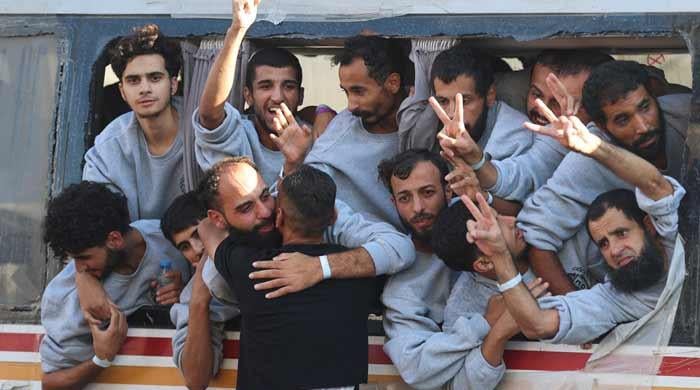
Overwhelmed with emotion, Palestinians poured into the streets of Gaza and the occupied West Bank to welcome home freed prisoners under a US-brokered ceasefire deal — a day marked by tears, cheers, and the bittersweet weight of loss and hope.
The prisoners were released after the Hamas militant group freed the last 20 living hostages taken during the October 7, 2023 attacks that precipitated the war in Gaza.
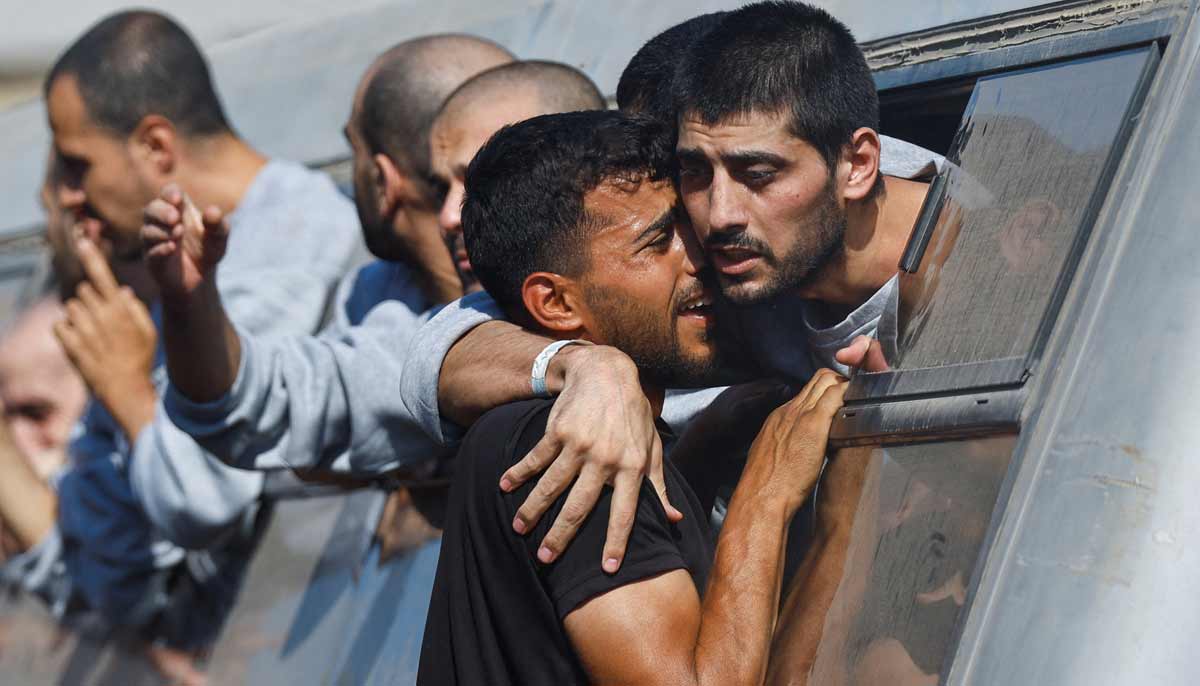
Under the deal, Israel is set to release 250 Palestinians convicted of murder and other serious crimes as well as 1,700 Palestinians detained in Gaza since the war began, 22 Palestinian minors, and the bodies of 360 militants.
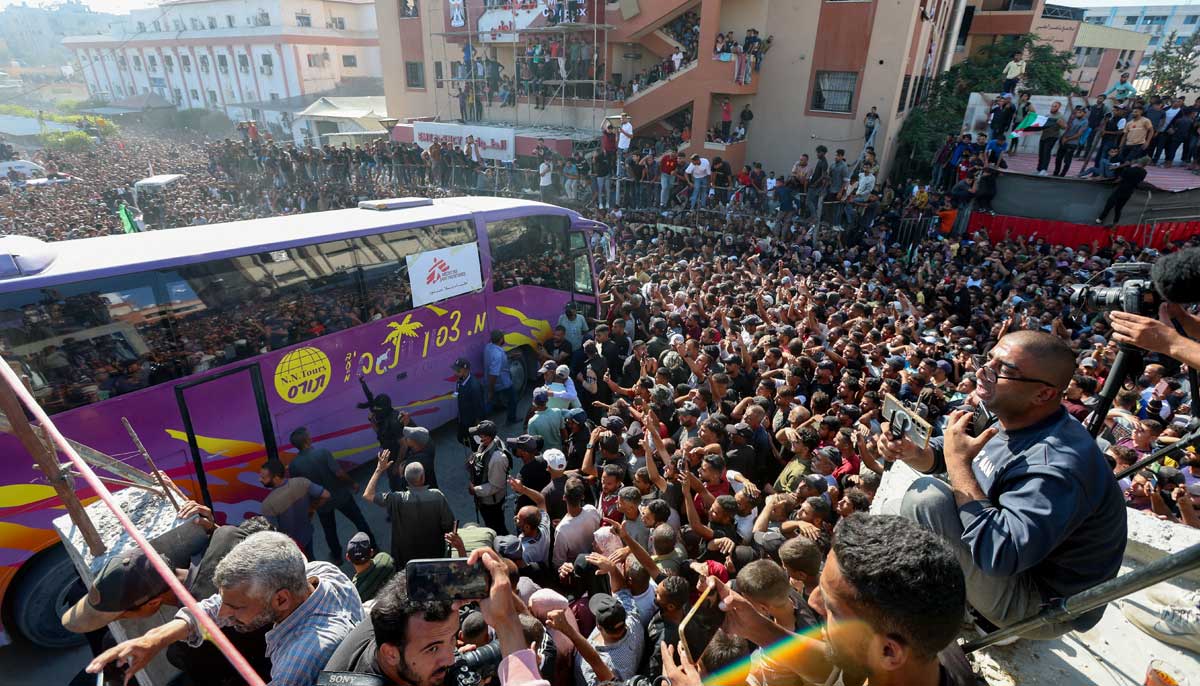
Several thousand people gathered inside and around the Nasser Hospital in Khan Younis in the southern Gaza Strip, awaiting the arrival of freed prisoners, with some waving Palestinian flags and others holding pictures of their relatives.
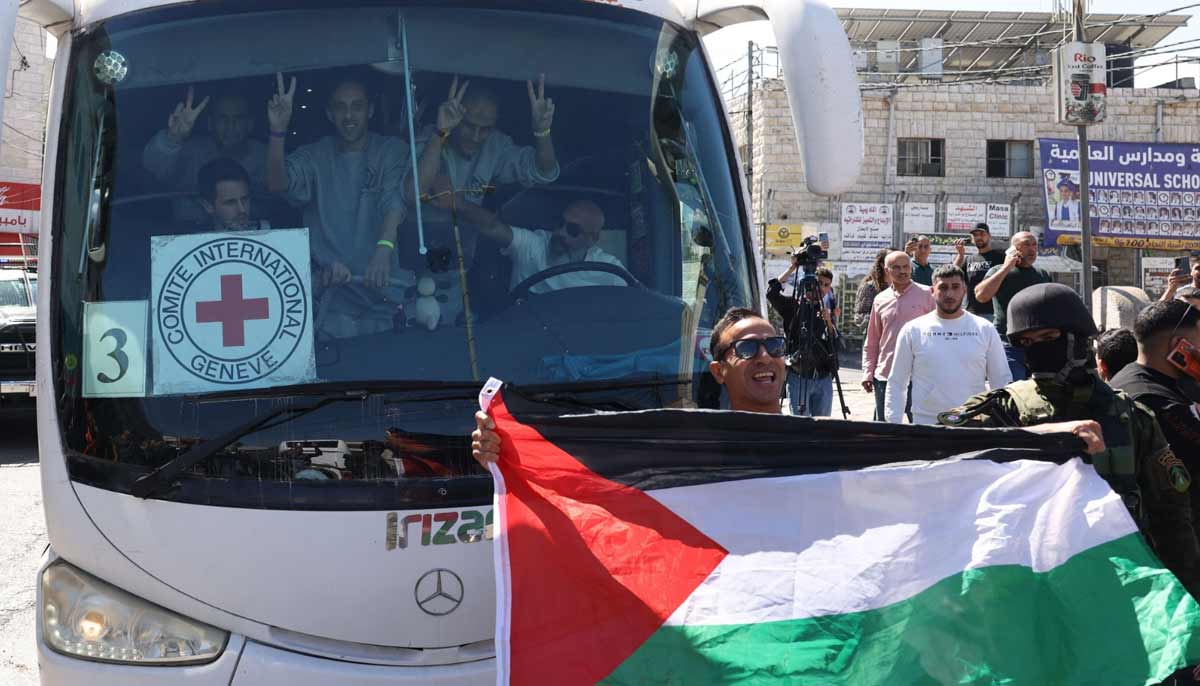
Fighting back tears, one woman who asked to be identified as Um Ahmed said she said that despite her joy at the release, she still had “mixed feelings” about the day.
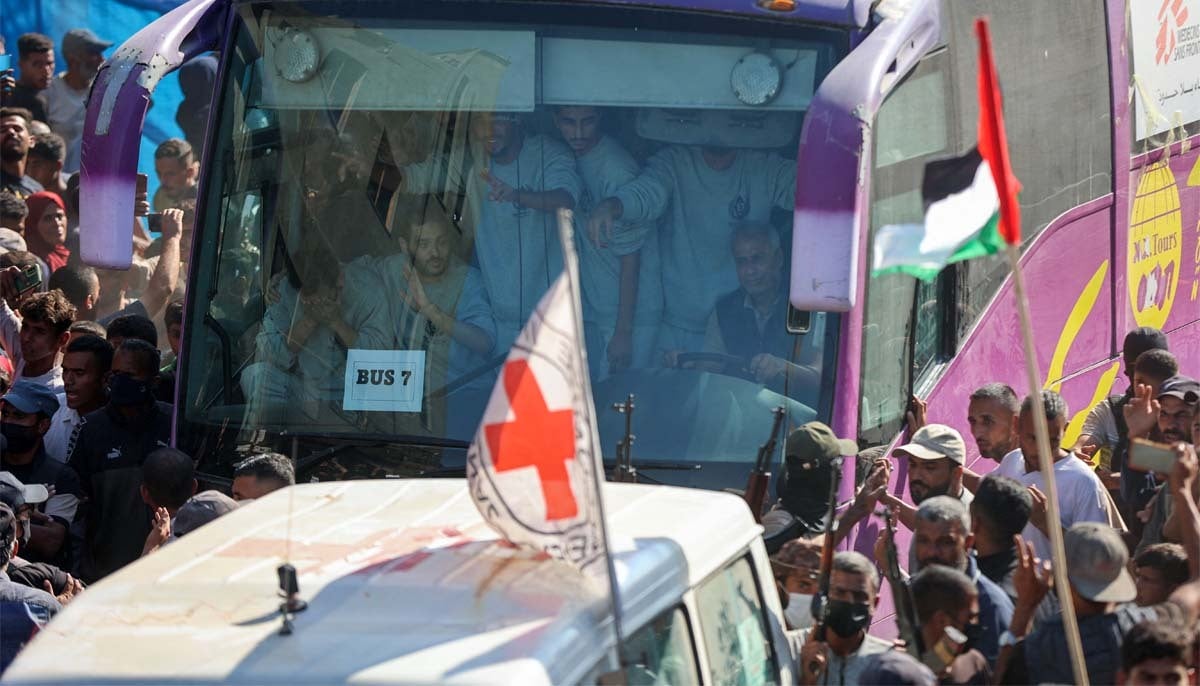
Freed prisoners arrived in buses, some of them posing from the windows, flashing V-for-Victory signs. They will undergo medical checks at the facility.
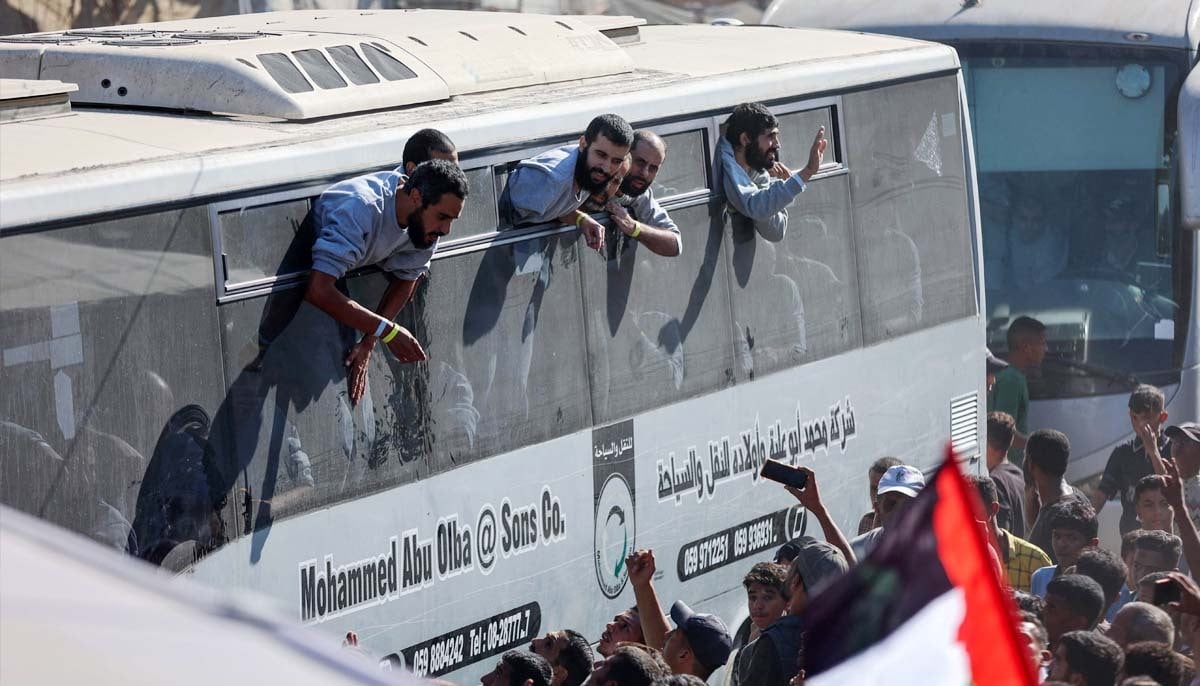
Earlier, about a dozen masked and black-clad gunmen, members of Hamas’ armed wing, arrived at the hospital where a stage and chairs had been laid out to welcome returning Palestinian prisoners.
Loudspeakers blared songs celebrating the Palestinian national cause.
Hamas said 154 prisoners were also deported to Egypt.
During previous releases, mass gatherings had flooded entire streets in Ramallah, with people waving Palestinian flags as well as those of political factions including Hamas.
‘Live my life’
Dressed in the grey tracksuits of Israeli prisons, many prisoners also wore a black-and-white kuffiyeh around their necks — the traditional scarf that has become synonymous with the Palestinian cause.
Some of the newly released prisoners happily let themselves be carried away on relatives’ shoulders.
“Prisoners live on hope… Coming home, to our land, is worth all the gold in the world,” said one freed detainee, Samer al-Halabiyeh.
“God willing, peace will prevail, and the war on Gaza will stop,” Halabiyeh added.
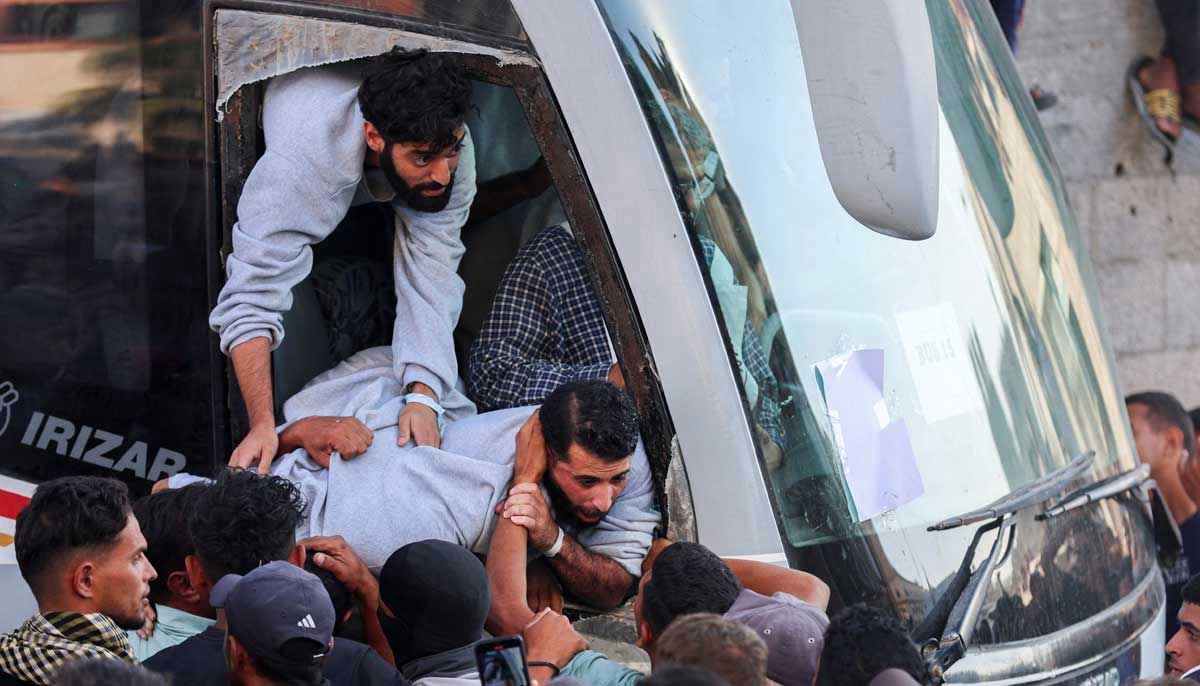
“Now I just want to live my life.”
Journalists rushed to talk to the prisoners, but many declined to engage, sometimes explaining that before their release, they were advised not to speak.
In the south Gaza city of Khan Yunis, a crowd gathered near Nasser Hospital, in the hope of catching sight of the prisoners taken during the war with Israel.
In the afternoon, thousands cheered to welcome their loved ones as they caught glimpse of the buses carrying them home.
Politics
10 takeaways from Donald Trump’s address to Israeli parliament
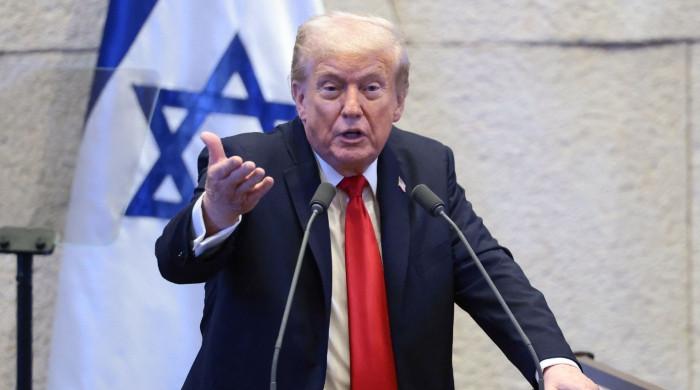
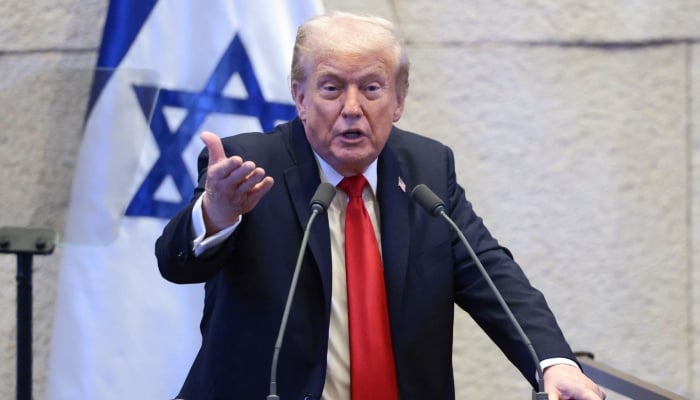
United States President Donald Trump on Monday addressed the Israeli parliament, following a peace deal he brokered to end the war in Gaza.
Here are 10 key takeaways from his address:
1. Gaza agreement dawn of a new Middle East
Trump was of the view that peace in Gaza ushered in the dawn of a new Middle East, saying that it ended the “long and painful nightmare” for all parties involved.
2. Offer to Iran for a peace deal
The US president expressed hope for a peace deal with Iran, saying his administration was ready for any agreement with the country.
3. Plan to disarm Hamas
The US president stated that the entire region has endorsed his plan to disarm Hamas.
4. Call on other nations to join Abraham Accords
Trump expressed hope that other countries would join the Abraham Accords quickly after the Gaza peace deal.
5. Acknowledgement of US help to Israel in Gaza war
“Israel, with our help, has won all that they can by force of arm[s],” the US president said.
6. Call for a pardon for Israeli PM
Trump called for a pardon for Israeli Prime Minister Benjamin Netanyahu, who has been accused of corruption.
7. Muslim nations’ role in peace efforts
Terming the Gaza deal a triumph, the US president thanked mediators from the Arab and Muslim world for their crucial role in the peace efforts.
8. Role in the rebuilding of Gaza
Trump said that he intended to be a partner in the effort to rebuild Gaza.
9. Israeli lawmaker interrupts Trump’s speech
A left-wing lawmaker was expelled after he interrupted the US president’s speech to the Israeli parliament.
10. Time to focus on Russia
Trump told his envoy Steve Witkoff that “we’ve got to get Russia done” following the implementation of the Gaza peace deal.
-

 Tech1 week ago
Tech1 week agoI’ve Tested Countless Mesh Systems. Here Are the Routers I Recommend
-

 Tech1 week ago
Tech1 week agoAll Hail the Surprisingly Versatile Packing Cube! These Are Our Favorites
-
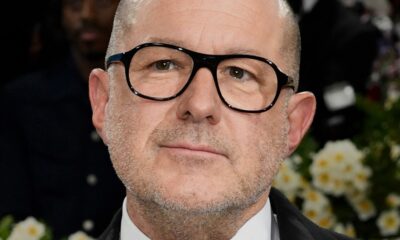
 Tech7 days ago
Tech7 days agoJony Ive Says He Wants His OpenAI Devices to ‘Make Us Happy’
-
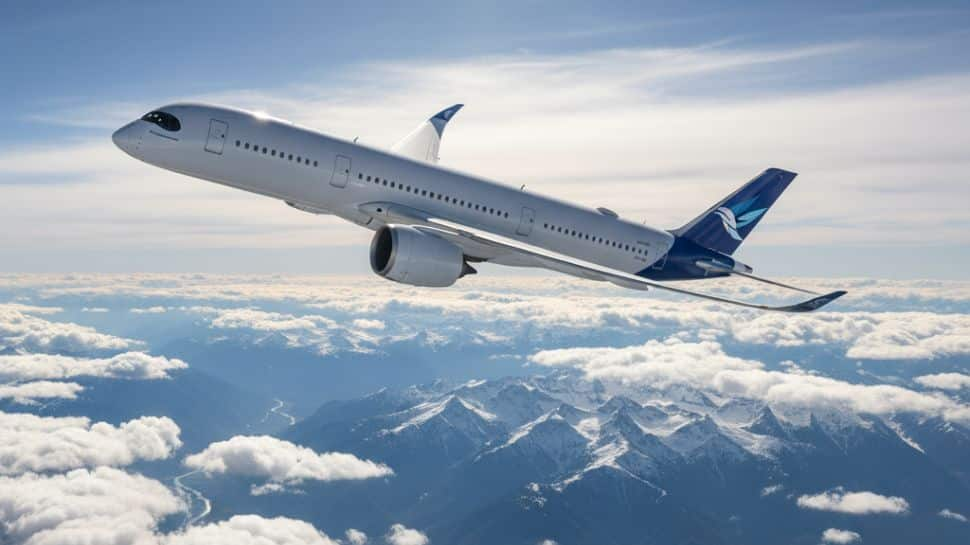
 Business1 week ago
Business1 week agoDGCA Reviews Airfare Trends Ahead Of Festive Season, Asks Airlines To Add More Flights
-
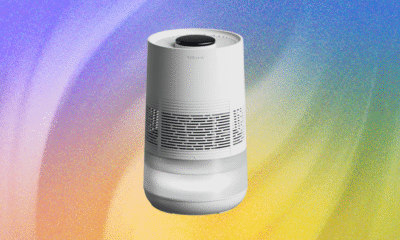
 Tech1 week ago
Tech1 week agoCombat Dry Indoor Winter Air With a New Humidifier
-
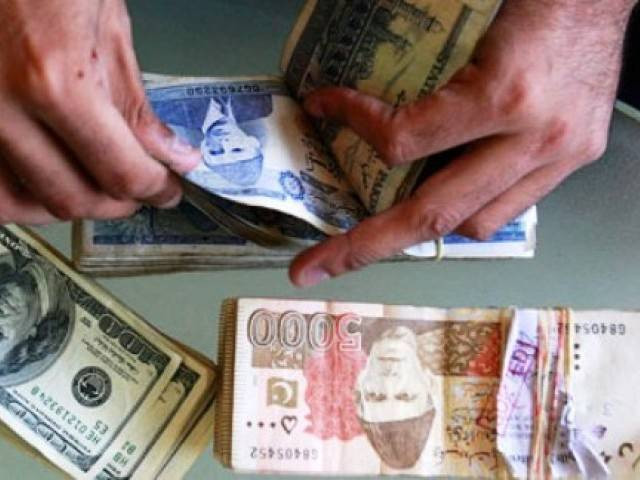
 Business1 week ago
Business1 week agoInvestors are packing up; Pakistan must ask why | The Express Tribune
-

 Tech1 week ago
Tech1 week agoOpenAI and chipmaker AMD sign chip supply partnership for AI infrastructure
-

 Entertainment7 days ago
Entertainment7 days agoHilaria Badlwin admits she takes parenting tips from step-daughter Ireland Baldwin






